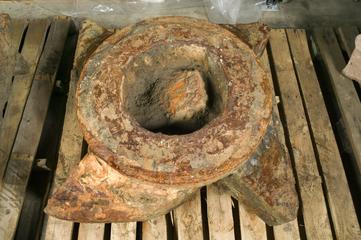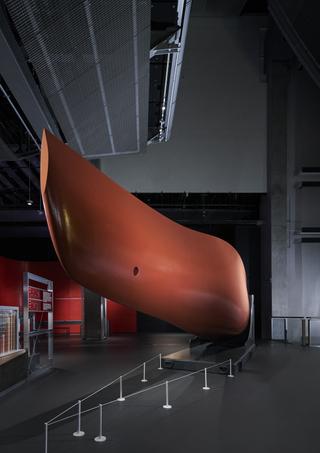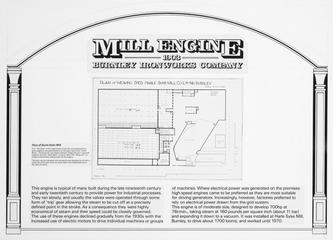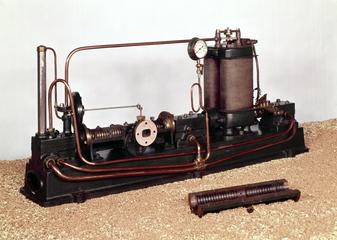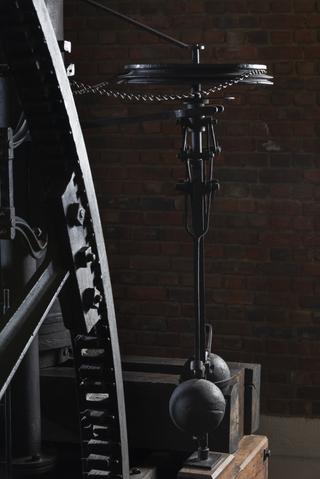
'Haystack' Boiler, 1775-1799
- Made:
- 1775-1799 (original); 1900-1907 (model) in United Kingdom
- maker:
- Science Museum, Workshops




Model, scale 1:12, of balloon or haystack boiler
The haystack boiler was the earliest type of boiler used alongside steam engines. It was typically employed with atmospheric engines, providing steam at very low pressure only, and was often positioned beneath the engine's cylinder, surrounded and supported by a brick-built setting which allowed for the provision of a surrounding heating flue, to maximisse the amount of heat conveyed to the water within. The boilers were fabricated from wrought iron plates, riveted together, and when they had finished their working lives the wrought iron shells often found new uses, as water tanks or even as shelters for horses.
This type of boiler, which together with its setting was only an adaptation of existing practice with brewers' pans and spirit stills, was used throughout the 18th century for supplying steam to atmospheric engines; under the name of the "balloon" boiler it survived in the Staffordshire district till late in the 19th century. The period represented by the model is about the middle of that century. At first it was the practice to place the boiler vertically under the engine cylinder, but about 1760, as the power of engines was increasing, the demand for more steam was met by an increase in the number of the boilers, placed in contiguous settings, rather than in their size. The boiler was under-fired and set in masonry or brickwork, so that the hot gases made a complete circuit of the sides on their way to the chimney in a way known as a wheel draught
